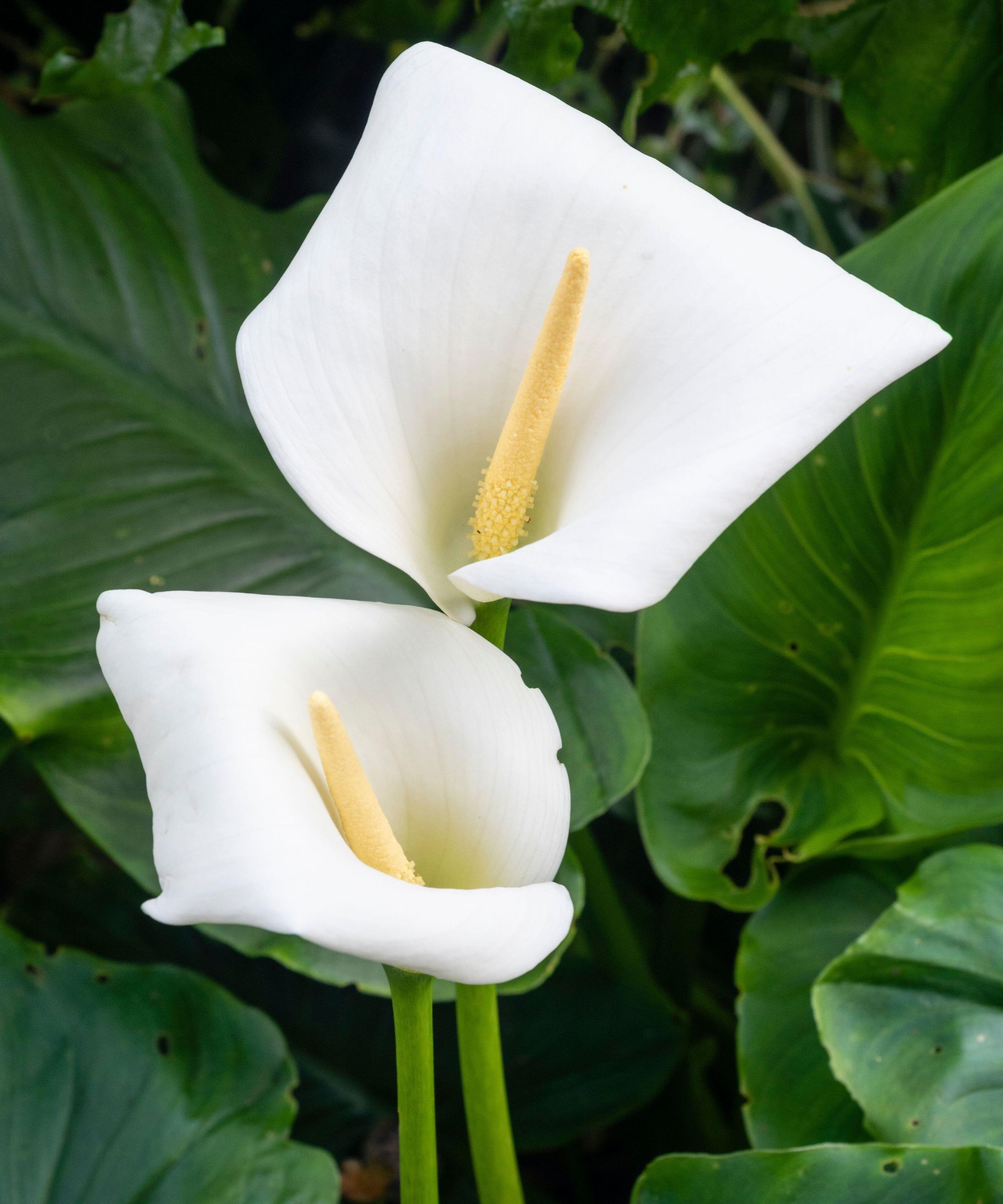Do calla lilies multiply? Experts reveal how to grow more of these elegant flowers for free
Calla lilies are some of the most sophisticated flowers to grow in your yard. Here's how you can get more of them without buying new bulbs


One thing I find most fascinating about plants is their ability to multiply. Whether its through propagations from cuttings or growing offsets, there is a real joy in seeing more plants appear. Plus, it's a sign that you're doing a good job at keeping the parent plant happy and healthy.
Calla lilies are one of the best summer bulbs that will gift you with more plants by multiplying. Although they're considered one of the most difficult perennials to grow, it can actually be quite easy to encourage a thriving calla lily to multiply and produce more plants.
I've spoken to experts to find out more about calla lilies multiplying - they revealed how this process happens and how to encourage it to take place.

Do calla lilies multiply?
Native to southern parts of Africa, calla lilies are a popular plant for a touch of class. They grow best in US hardiness zone 8 to zone 10 and will keep blooming for a couple of months at a time if you provide them with optimal care.
Calla lilies will indeed multiply when they are happy - here's what experts say about getting them to do so.
How do calla lilies multiply?

There are many ways to get more plants from plants, whether its taking cuttings to propagate, dividing them or growing new plants from offsets. Each plant will multiply in a different way - for calla lilies, it all happens beneath ground level.
'Calla lilies multiply when they grow new buds on the rhizomes, which are underground stems from which the plants grow,' says Julie Bawden-Davis, plant expert at Healthy Houseplants.
Design expertise in your inbox – from inspiring decorating ideas and beautiful celebrity homes to practical gardening advice and shopping round-ups.
If you grow calla lilies, you may notice new plants spread across your yard. New bulbs are grown beneath the ground, causing more of these beautiful plants to pop up.
If you're pleased to have more calla lilies but aren't happy with their location, you can divide the bulbs and replant them - just ensure you plant bulbs deep enough for successful growth and to protect them from any frosts during colder seasons.

Julie Bawden-Davis is a garden author and University of California Certified Master Gardener, who has written several gardening books, including Indoor Gardening The Organic Way. In addition to running HealthyHouseplants.com, she shares indoor gardening advice on her YouTube channel @HealthyHouseplants.
How do you encourage calla lilies to multiply?

Although healthy calla lilies will multiply on their own, you can encourage multiplying by continuing to provide the best care for your plants.
'The best way to encourage multiplying is to keep the plants happy by making sure to keep the soil moist but not soggy, provide full sun and fertilize spring through summer,' says Julie.
You can water your plants correctly by using this moisture meter from Amazon to monitor moisture levels in the soil.
Calla lilies also do best in a sunny position, so they're a perfect option for a south-facing garden or wall. Use a balanced fertilizer, like this all purpose plant food from Amazon, to encourage longer blooming during its active growth season.
It can also be wise to cut back calla lilies after flowering and before frost to encourage returning blooms in spring and summer.
FAQs
What time of year do calla lilies multiply?
New calla lily plants are produced around early spring, when the parent plant has produced new buds on rhizomes beneath the ground. This is a good time to divide calla lily bulbs, right before active growth sets in. You can then plant up the new bulbs and give them optimal care to encourage new plants to grow.
Can I propagate calla lilies from cuttings?
As with other bulbs, it's unlikely propagation from cuttings will be successful. The best way to propagate calla lilies is by dividing bulbs where the parent plant has produced new ones beneath the ground. Take care to divide bulbs when the calla lily isn't actively growing in early spring, so that you don't disrupt the parent plant's growth.
Adding a touch of sophistication to your backyard landscape, calla lilies will reward your space with more and more plants. Continue providing optimal care for these plants and you'll have new calla lilies for free.
If you want to get more plants for free, make sure you know which plants to never divide so that you don't risk losing the plants you already have.

Tenielle is a Gardens Content Editor at Homes & Gardens. She holds a qualification in MA Magazine Journalism and has over six years of journalistic experience. Before coming to Homes & Gardens, Tenielle was in the editorial department at the Royal Horticultural Society and worked on The Garden magazine. As our in-house houseplant expert, Tenielle writes on a range of solutions to houseplant problems, as well as other 'how to' guides, inspiring garden projects, and the latest gardening news. When she isn't writing, Tenielle can be found propagating her ever-growing collection of indoor plants, helping others overcome common houseplant pests and diseases, volunteering at a local gardening club, and attending gardening workshops, like a composting masterclass.
